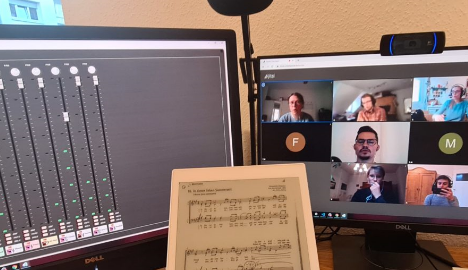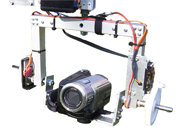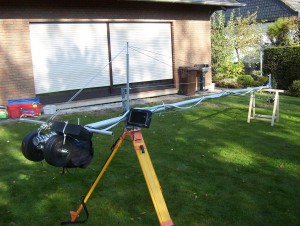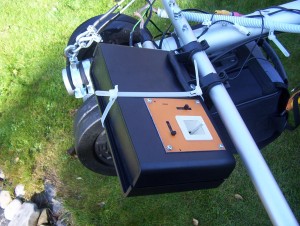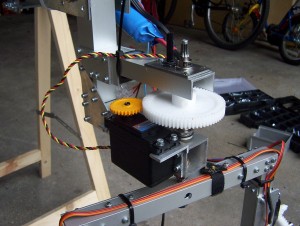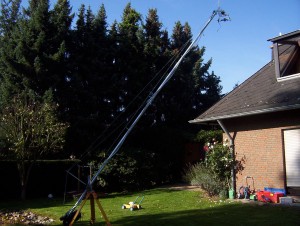Singing proved to be a challenge during the Corona pandemic, both because of hygienic considerations and contact restrictions.
While conferencing software like Zoom, Teams or Skype worked for other types of remote collaboration, making music together proved to be impossible due to the latency – having musicians with more than 0.5 seconds delay trying to interact with each other does not work. Some choirs resort to a many-to-one setting, meaning that everyone is muted except the choir director who plays the score on the piano. This results in everyone singing at home alone, just listening to the piano – and the director is fully on their own, with occasional questions like “did anyone have a problem here?” left as their only feedback channel.
Still, this is better than not making music at all, but luckily there is a better (but way more compilated) solution for it. We used the open source tools Jamulus and Jitsi.
Jamulus for audio
Jamulus is a software dedicated to low-latency audio connections over the internet. You can set up your own server but we used a paid service for this, as it proved to be fast and reliable: https://melomax.live/booking/ It is even possible to just start the server on your home PC, but the experience in terms of quality and latency was much worse!
I would only recommend to start a server on your home PC for the first phase and this is the “getting everyone up to speed” phase, which can take a couple of hours. Unfortunately, Jamulus is not an out-of-the-box solution and often has issues with the audio hardware.
- Have every singer read through the setup guide here: https://jamulus.io/wiki/Getting-Started . At the very minimum they need cable headphones. An Ethernet cable and an external microphone are highly recommended.
- Have a tech-savvy person available who starts a preliminary server on their PC, because it is cheaper there.
- Invite the other singers in small groups (more than four would likely overburden your preliminary server) to test their setup. Prepare for a couple of hours of tech support here (again, you need at least one tech-savvy person for this). In general, you need to experiment which audio settings work for each individual.
- When you are confident that the singers are ready, book your sessions on Melomax and invite the whole group there.
- Be prepared for additional tech support and expect that setups which worked previously might miraculously break later.
The setup can be very frustrating, but the outcome was really worth it – we had a really emotional situation when we were able to digitally sing together after months of silence!
Jitsi for video
Jamulus only supports audio and it is already sufficient for making music together. But the main drawback is that you still need a “main reference” i.e., a piano to sing along. This is needed to cope with the minimal but still existing latency – everyone has to concentrate on it so the choir does not get slower and slower.
But good news! It is possible to also enable low-latency video, using a second software named Jitsi. The trick is to setup your own Jitsi server and configure it to be low-latency. In essence, this means to
- Reduce the video quality to a bare minimum (e.g. 320 x 190 pixels)
- Disable Jitsi audio
- Disable encryption
To achieve this, you need to setup a Jitsi server (this time, an existing service won’t be enough as you need detailed control over the instance). Then, add the following settings to the /etc/jitsi/meet/<server name>-config.js :
{
testing: {
disableE2EE: true,
p2pTestMode: false
},
enableNoisyMicDetection: false,
startWithAudioMuted: true,
startSilent: true,
stereo: true,
disableAP: true,
resolution: 200,
constraints: {
video: {
aspectRatio: 16 / 9,
height: {
ideal: 200,
max: 200,
min: 100
}
}
},
enableLayerSuspension: true,
prejoinPageEnabled: false,
p2p: {
enabled: false,
}
}
The result
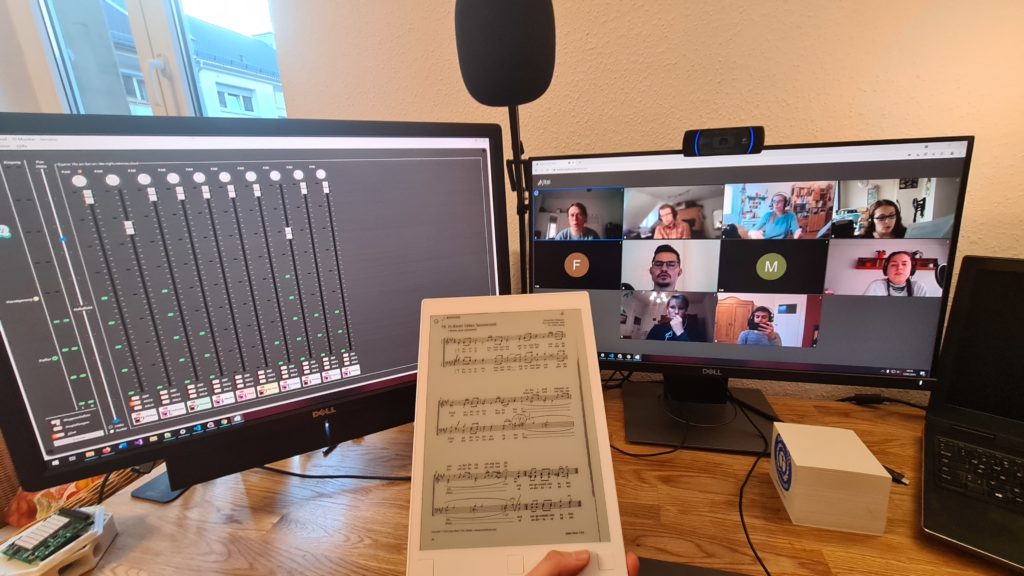
This technical setup allowed us to come together during the lock down(s) and hence, we were able to record the result quickly when we were allowed to meet again. Still, with unusually large gaps between every singer, but at least physical again:
You can find more about the choir (in German) on https://vokalspezial.de/
